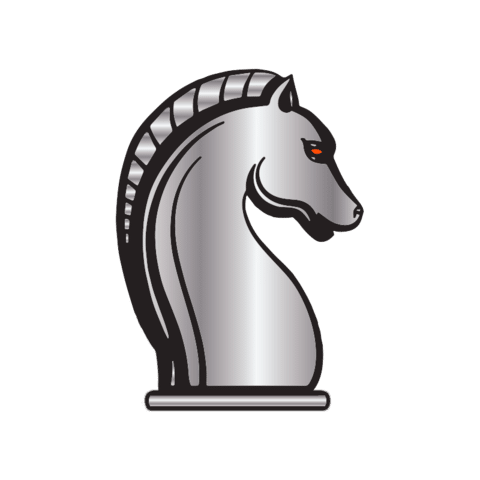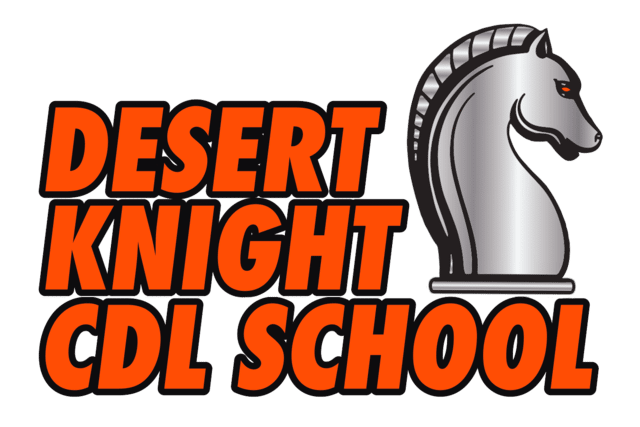Now Offering Class A and B Refreshers Courses!
Class A CDL Refresher Course – Up to 80 hours ($2,800)
Class B CDL Refresher Course – Up to 40 hours ($2,200)
We have created a program that produces safe and competent truck driving.
The objectives of the truck driving program are as follows:
DK101 – General Knowledge – 40 Hours
CDL general knowledge training takes place within the classroom. Topics include an introduction to trucking, large vehicle controls, speed & space management, trucking safety, skid control & recovery, transporting cargo loads, and much more!
Hours of Service and Trip Planning also takes place within the classroom. Federal Motor Carrier Safety Administration (FMCSA) guidelines will be discussed along with the proper ways to implement these guidelines.
DK103 – Pre-Trip Inspections and Straight-Line Backing – 25 Hours
DK104 – Backing & Skills – 40 Hours
CDL backing & skills practice starts off on the pad and eventually progresses to the road. Docking and parking will be discussed in-depth before actually getting behind the wheel.
Road driving is the culmination of everything students at Desert Knight CDL school have learned in the classroom and on the road. Students apply their knowledge to real-life driving and situations.
Detailed Curriculum Coverage Includes:
Class A CDL
This is a summary of the minimum Federal curriculum requirements for entry-level driver applicants seeking a Class A commercial driver’s license (CDL). Training providers must also comply with any applicable State requirements. The curriculum for Class A applicants pertains to combination vehicles (Group A) as defined in § 383.91(a)(1).
Theory Instruction Standard Curriculum
There are no required minimum instruction hours for theory training, but the instructor must cover all the topics in the curriculum. Training providers must use assessments (in written or electronic format) to determine if trainees are proficient in all units of the theory curriculum. Students must earn a minimum overall score of 80 percent on the theory assessment(s).
- A1.1 Basic Operation 1.1.1 Orientation
- 1.1.2 Control Systems/Dashboard
- 1.1.3 Pre- and Post-Trip Inspections
- 1.1.4 Basic Control
- 1.1.5 Shifting/Operating Transmissions
- 1.1.6 Backing and Docking
- 1.1.7 Coupling and Uncoupling
- A1.2 Safe Operating Procedures
- 1.2.1 Visual Search
- 1.2.2 Communication
- 1.2.3 Distracted Driving
- 1.2.4 Speed Management
- 1.2.5 Space Management
- 1.2.6 Night Operation
- 1.2.7 Extreme Driving Conditions
- A1.3 Advanced Operating Practices
- 1.3.1 Hazard Perception
- 1.3.2 Skid Control/Recovery, Jackknifing, and Other Emergencies
- 1.3.3 Railroad-Highway Grade Crossings
- A1.4 Vehicle Systems and Reporting Malfunctions
- 1.4.1 Identification and Diagnosis of Malfunctions
- 1.4.2 Roadside Inspections
- 1.4.3 Maintenance
- A1.5 Non-Driving Activities
- 1.5.1 Handling and Documenting Cargo
- 1.5.2 Environmental Compliance Issues
- 1.5.3 Hours of Service Requirements
- 1.5.4 Fatigue and Wellness Awareness
- 1.5.5 Post-Crash Procedures
- 1.5.6 External Communications
- 1.5.7 Whistleblower/Coercion
- 1.5.8 Trip Planning
- 1.5.9 Drugs/Alcohol
- 1.5.10 Medical Requirements
Behind-the-Wheel (BTW) Range
There are no required minimum instruction hours for BTW range training, but the instructor must cover all topics set forth in the BTW curriculum. The instructor must document the total number of clock hours (one clock hour for every 60 minutes of instruction) each trainee takes to complete the BTW range curriculum. The instructor must document that each trainee is proficient in all elements of the BTW range curriculum for the trainee to successfully complete this module.
BTW range training must teach driving exercises related to basic vehicle control skills and mastery of basic maneuvers, as covered in 49 CFR §§ 383.111 and 383.113. The training providers must teach this unit on a driving range as defined in § 380.605. The training provider must teach “Get Out and Look” (GOAL) to the trainee as it applies to units A2.2-2.6.
Behind-the-Wheel (BTW) Public Road
There are no required minimum instruction hours required for BTW public road training, but the instructor must cover all topics set forth in the BTW curriculum and must document the total number of clock hours (one clock hour for every 60 minutes of instruction) each trainee takes to complete the BTW public road curriculum. The instructor must document that each trainee is proficient in all elements of the BTW public road curriculum for the trainee to successfully complete this module. The instructor must engage in active two-way communication with the trainees during all active BTW public road training sessions.
Skills described in units A3.8 through 3.12 of this section must be discussed during public road training, but not necessarily performed. Trainees are not required to demonstrate proficiency in the skills described in units A3.8 through 3.12; however, trainees are required to demonstrate their ability to recognize potential dangers, be familiar with how to operate a CMV safely at night and in extreme conditions, and know the causes of skidding and jackknifing and the techniques for avoiding and recovering from them.
- A3.1 Vehicle Controls Including: Left Turns, Right Turns, Lane Changes, Curves at Highway Speeds, and Entry and Exit on the Interstate or Controlled Access Highway
- A3.2 Shifting/Transmission
- A3.3 Communications/Signaling
- A3.4 Visual Search
- A3.5 Speed and Space Management
- A3.6 Safe Driver Behavior
- A3.7 Hours of Service (HOS) Requirements
- A3.8 Hazard Perception
- A3.9 Railroad (RR)-Highway Grade Crossing
- A3.10 Night Operation
- A3.11 Extreme Driving Conditions
- A3.12 Skid Control/Recovery, Jackknifing, and Other Emergencies
Class B to Class A CDL Upgrade
Theory Instruction Upgrade Curriculum
This is a summary of the minimum Federal curriculum requirements for Class B CDL drivers seeking to upgrade to a Class A CDL. In addition to the upgrade theory curriculum outlined below, trainees must also complete the BTW range and BTW public road requirements for trainees seeking a Class A CDL for the first time. Training providers must also comply with any applicable State requirements.
- BA1.1 Basic Operation
- 1.1.1 Orientation
- 1.1.2 Control Systems/Dashboard
- 1.1.3 Pre- and Post-Trip Inspections
- 1.1.4 Basic Control
- 1.1.5 Shifting/Operating Transmissions
- 1.1.6 Backing and Docking
- 1.1.7 Coupling and Uncoupling
- BA1.2 Safe Operating Procedures
- 1.2.1 Visual Search
- 1.2.2 Communication
- 1.2.3 Distracted Driving
- 1.2.4 Speed Management
- 1.2.5 Space Management
- 1.2.6 Night Operation
- 1.2.7 Extreme Driving Conditions
- BA1.3 Advanced Operating Practices
- 1.3.1 Hazard Perception
- 1.3.2 Skid Control/Recovery, Jackknifing, and Other Emergencies
- 1.3.3 Railroad-Highway Grade Crossings
- BA1.4 Vehicle Systems and Reporting Malfunctions
- 1.4.1 Identification and Diagnosis of Malfunctions
- 1.4.2 Roadside Inspections
- 1.4.3 Maintenance
- BA1.5 Non-Driving Activities
- 1.5.1 Hours of Service Requirements
- 1.5.2 Fatigue and Wellness Awareness
Class B CDL
This is a summary of the minimum Federal curriculum requirements for entry-level driver trainees seeking a Class B CDL. Training providers must also comply with any applicable State requirements. The curriculum for Class B applicants pertains to heavy straight vehicles (Group B) as defined in § 383.91(a)(2).
Theory Instruction Standard Curriculum
There are no required minimum instruction hours for theory training, but the instructor must cover all the topics in the curriculum. Training providers must use assessments (in written or electronic format) to determine if trainees are proficient in all units of the theory curriculum. Students must earn a minimum overall score of 80 percent on the theory assessment(s).
- B1.1 Basic Operation
- 1.1.1 Orientation
- 1.1.2 Control Systems/Dashboard
- 1.1.3 Pre- and Post-Trip Inspections
- 1.1.4 Basic Control
- 1.1.5 Shifting/Operating Transmissions
- 1.1.6 Backing and Docking
- B1.2 Safe Operating Procedures
- 1.2.1 Visual Search
- 1.2.2 Communication
- 1.2.3 Distracted Driving
- 1.2.4 Speed Management
- 1.2.5 Space Management
- 1.2.6 Night Operation
- 1.2.7 Extreme Driving Conditions
- B1.3 Advanced Operating Practices
- 1.3.1 Hazard Perception
- 1.3.2 Skid Control/Recovery, Jackknifing, and Other Emergencies
- 1.3.3 Railroad-Highway Grade Crossings
- B1.4 Vehicle Systems and Reporting Malfunctions
- 1.4.1 Identification and Diagnosis of Malfunctions
- 1.4.2 Roadside Inspections
- 1.4.3 Maintenance
- B1.5 Non-Driving Activities
- 1.5.1 Handling and Documenting Cargo
- 1.5.2 Environmental Compliance Issues
- 1.5.3 Hours of Service Requirements
- 1.5.4 Fatigue and Wellness Awareness
- 1.5.5 Post-Crash Procedures
- 1.5.6 External Communications
- 1.5.7 Whistleblower/Coercion
- 1.5.8 Trip Planning
- 1.5.9 Drugs/Alcohol
- 1.5.10 Medical Requirements
Behind-the-Wheel (BTW) Range
There are no required minimum instruction hours for BTW range training, but the instructor must cover all topics set forth in the BTW range curriculum. The instructor must document the total number of clock hours (one clock hour for every 60 minutes of instruction) each trainee takes to complete the BTW range curriculum.
The instructor must document that each trainee is proficient in all elements of the BTW range curriculum for the trainee to successfully complete this module. This unit must teach driving exercises related to basic vehicle control skills and mastery of basic maneuvers, as covered in 49 CFR §§ 383.111 and 383.113. The training providers must teach this unit on a driving range as defined in § 380.605. The training provider must teach “Get Out and Look” (GOAL) to the trainee as it applies to units B2.2-2.6.
- B2.1 Vehicle Inspection Pre-Trip/Enroute/ Post-Trip
- B2.2 Straight Line Backing
- B2.3 Alley Dock Backing (45/90 Degree)
- B2.4 Off-Set Backing
- B2.5 Parallel Parking Blind Side
- B2.6 Parallel Parking Sight Side
Behind-the-Wheel (BTW) Public Road
There are no required minimum instruction hours required for BTW public road training, but the instructor must cover all topics set forth in the BTW public road curriculum and must document the total number of clock hours (one clock hour for every 60 minutes of instruction) each trainee takes to complete the BTW public road curriculum. The instructor must determine and document that each trainee is proficient in all elements of the BTW public road curriculum for the trainee to successfully complete this module. The instructor must engage in active two-way communication with the trainees during all active BTW public road training sessions.
Skills described in units B3.8 through 3.12 of this section must be discussed during public road training, but not necessarily performed. Trainees are not required to demonstrate proficiency in the skills described in units B3.8 through 3.12.
- B3.1 Vehicle Controls Including: Left Turns, Right Turns, Lane Changes, Curves at Highway Speeds, and Entry and Exit on the Interstate or Controlled Access Highway
- B3.2 Shifting/Transmission
- B3.3 Communications/Signaling
- B3.4 Visual Search
- B3.5 Speed and Space Management
- B3.6 Safe Driver Behavior
- B3.7 Hours of Service (HOS) Requirements
- B3.8 Hazard Perception
- B3.9 Railroad (RR)-Highway Grade Crossing
- B3.10 Night Operation
- B3.11 Extreme Driving Conditions
- B3.12 Skid Control/Recovery, Jackknifing, and Other Emergencies
Ready to start an exciting
new chapter in your life?
Contact us
Feel free to reach us if you need any assistance
Main Office Address
1080 Linda Way Suite #3
Sparks, NV 89431
Skills Pad Address
1350 N. Wells Ave.
Reno, NV 89431
Phone
(775) 331-9231
(775) 400-9453
Hours of Operation
Monday - Friday: 9AM-6PM
Saturday: 9AM-12PM
Sunday: Closed


